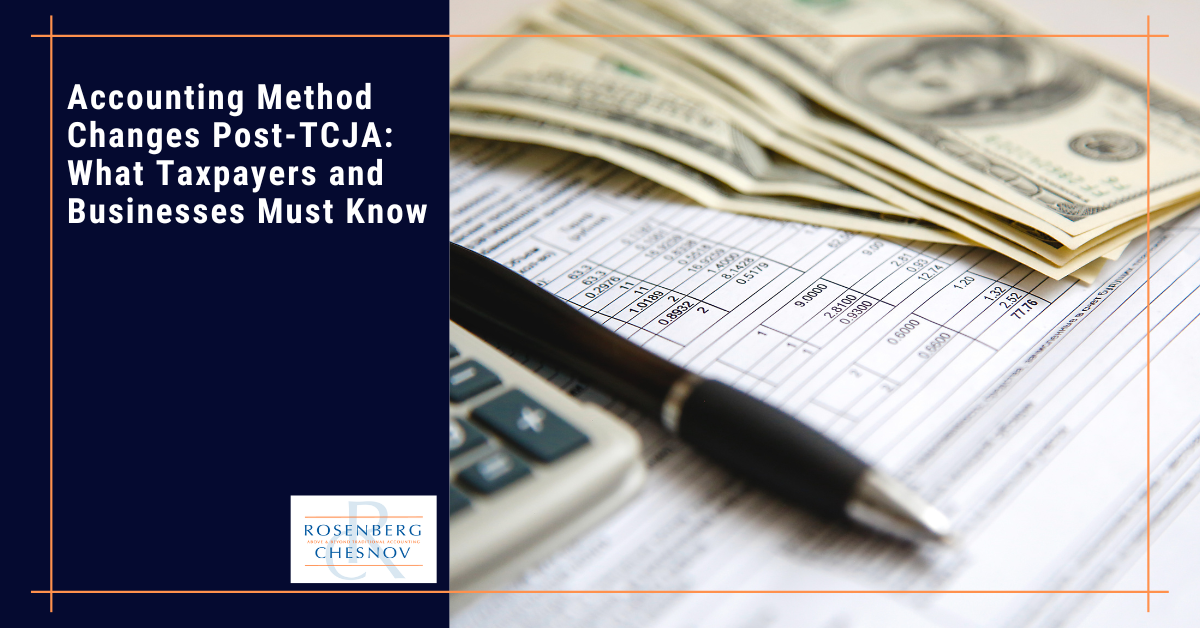What is the TCJA?
The Tax Cuts and Jobs Act, which became law in December of 2017, was the most comprehensive tax reform package in more than thirty years and provided sweeping changes to the federal tax code.
At the heart of the TCJA was the primary goal to simplify the income tax code, reduce taxes for individuals, and encourage job creation by providing tax incentives for businesses. To achieve this, the TCJA lowered the corporate and top individual tax rates, nearly doubled the standard deduction, and provided a new deduction for qualified business income (which we discussed in more detail on this blog; you can read more here).
The Act also implemented many other reforms, such as restricting the deductibility of state and local taxes, capping the mortgage interest deduction, and much more.
We’ve covered many angles on the TCJA’s myriad impacts, from the tax deductibility of R&D costs to the New York/New Jersey Pass-Through Entity Tax and plenty more…There is no shortage of tax-related topics affected by the TCJA, and accounting methods are no exception.
What are the different types of accounting methods?
Accounting is a cornerstone of any business, but smart record-keeping is just as vital for individual taxpayers. As we have previously discussed, an accurate and thoroughly-documented tax return is the key to maximizing your tax saving and avoiding fines, fees, or even an audit.
Likewise, any successful business must ensure accuracy and efficiency in its finances. Companies can use various accounting methods to do so, but the most common method used by businesses today is called the accrual method. Another common method is called the cash method, while a third approach, which combines elements of both the cash and accrual methods, is called modified cash-basis accounting or the hybrid method. Finally, there is the fair value method, which larger businesses with complex financial reporting needs often use to value assets and liabilities at their current market value.
The cash and accrual methods are the two primary methods used most often, as well as being particularly impacted by the TCJA — so we’ll focus on these two methods for our purposes here.
What is the difference between cash and accrual accounting methods?
Both cash and accrual accounting methods are commonly used for keeping track of transactions; the main difference between them is the timing of when the transactions are recorded.
- Using the cash method, you record transactions when money is exchanged — meaning when cash is received or spent. This method often allows you to defer the recognition of income.
- Using the accrual method, you record transactions when goods or services are delivered or received, regardless of when the cash is exchanged. This method often allows you to accelerate the recognition of income.
For example, if you purchase inventory on January 1st and it is delivered the same day, but you won’t pay for the goods until April 1st, you would wait until April 1st to record the purchase if using the cash method. On the other hand, if using the accrual method, you would record the purchase on January 1st, when the goods are delivered.
The cash method can seem more straightforward and intuitive than the accrual method, but it needs to provide more accurate information. With the cash method, you don’t have any information about money you are owed or owe until it is received or paid. With the accrual method, you can see the complete picture of your financial position, as this method records all transactions when they occur, regardless of when the cash is exchanged.
What did the Tax Cuts and Jobs Act (TCJA) change about accounting methods?
One of the most significant changes introduced by the TCJA was to expand the number of small businesses eligible to use the cash method of accounting. Before the passage of the Act, this method was limited to smaller businesses with $5 to $10 million or less in annual revenue, C corporations making $5 million or less per year, and S corporations, partnerships, and individuals making $10 million or less were permitted to use the cash method. While larger entities grossing more than these threshold amounts could use the accrual method
The TCJA has dramatically increased the revenue threshold to a striking $25 million (in 2017) for all entities. In the most simplified terms, any entity with annual average gross receipts beneath that threshold may be able to choose the cash accounting method.
Furthermore, the $25 million 2017 threshold is also adjusted annually for inflation — meaning that in 2022 the amount was $27 million, and this year, the cutoff is up to $29 million.
Naturally, exceptions and various factors and considerations can complicate things. For example, the IRS considers a partnership or any other entity (except a C-corporation) with more than 35% of losses allocated to limited partners or limited entrepreneurs to be a tax shelter and thereby prohibits it from using the cash method of accounting.
The TCJA also exempts eligible small businesses from certain accounting rules for inventories, cost capitalization, and long-term contracts. For example, an entity with annual average gross receipts of less than the inflation-adjusted threshold may treat its inventory as “incidental materials and supplies” and deduct these items when used. Such entities may apply the cash method even while in possession of inventory.
Finally, the “percent of completion” method of accounting for long-term contracts, which recognizes revenue and expenses as a percentage of the work completed during the period, is no longer a requirement for eligible entities beneath the threshold.
As mentioned above, another significant change made by the TCJA involves the capitalization of R&D expenses — we have discussed this in more detail previously on this blog.
Which accounting method should you use?
Although the TCJA expands the number of businesses eligible to use the cash method, they are not required to do so. In fact, most larger businesses use accrual accounting, while individuals and small businesses tend to use the cash method. According to the IRS, qualifying small business taxpayers may elect to use either method (however, they must stick with the chosen method, and it must accurately reflect business operations).
Each method has advantages and disadvantages. The accrual method can give small business owners a more accurate picture of income and accrued expenses during a given period, scale as your revenue increases, and conform to Generally Accepted Accounting Principles, or GAAP (the accounting standard accepted by the U.S. Securities and Exchange Commission). On the other hand, it is more resource-intensive and inaccurate in the short term.
The cash method can be simpler and more streamlined and is extremely useful for small businesses or individuals with restricted cash flow. However, it only accounts for some revenue and expenses and provides a less-accurate financial picture. Additionally, this method can create issues when your business has outstanding bills and does not conform to GAAP.
The right option for you depends on multiple factors, like the size, complexity, and nature of your business. Small companies with primarily cash transactions and minimal product inventory may find the cash accounting method more convenient and reliable. In contrast, businesses that require more accurate and updated accounting may favor the accrual method.
As always, the best way to get personalized and nuanced advice about your unique tax and accounting circumstances is to reach out to an accounting professional; our team of experts stands ready to assist you with your needs.
Would you like some help?
If you are a client and would like to book a consultation, call us at +1 (212) 382-3939 or contact us here to set up a time.
If you aren’t a client, why not? We can take care of your accounting, bookkeeping, tax, and CFO needs so that you don’t have to worry about any of them. Interested? Contact us here to set up a no-obligation consultation.
Stay informed
Interested in receiving updates in your mailbox? Check out our newsletter, full of information you can use. It comes out once every two weeks, and you can register for it below.





